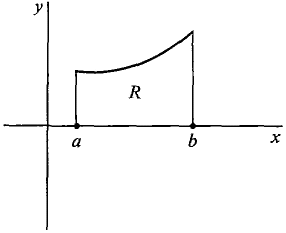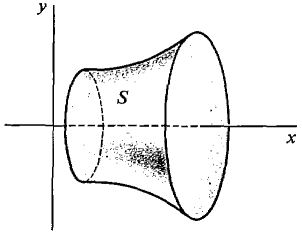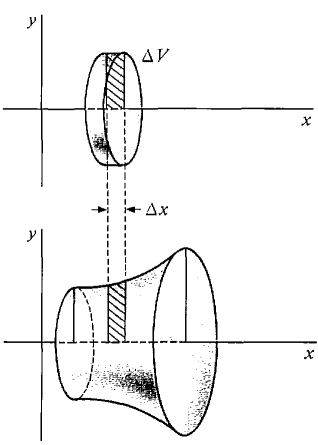| The ebook Elementary Calculus is based on material originally written by H.J. Keisler. For more information please read the copyright pages. |

|

Home  Applications of the Integral Applications of the Integral  Volumes of Solids of Revolution Volumes of Solids of Revolution  Disc Method Disc Method |
|||||||






|
|||||||
Disc Method
DISC METHOD: For rotations about the axis of the independent variable. Let us first consider the region under a curve. Let R be the region under a curve y = f(x) from x = a to x = b, shown in Figure 6.2.3(a).
x is the independent variable in this case. To keep R in the first quadrant we assume 0 ≤ a < b and 0 ≤ f(x). Rotate R about the x-axis, generating the solid of revolution S shown in Figure 6.2.3(b). This volume is given by the formula below. VOLUME BY DISC METHOD To justify this formula we slice the region R into vertical strips of infinitesimal width Δx. This slices the solid S into discs of infinitesimal thickness Δx. Each disc is almost a cylinder of height Δx whose base is a circle of radius f(x) (Figure 6.2.4). Therefore ΔV = π(f(x))2 Δx (compared to Δx). Then by the Infinite Sum Theorem we get the desired formula
Figure 6.2.4 Disc Method
|
|||||||
Home  Applications of the Integral Applications of the Integral  Volumes of Solids of Revolution Volumes of Solids of Revolution  Disc Method Disc Method |
|||||||
Last Update: 2010-11-25







